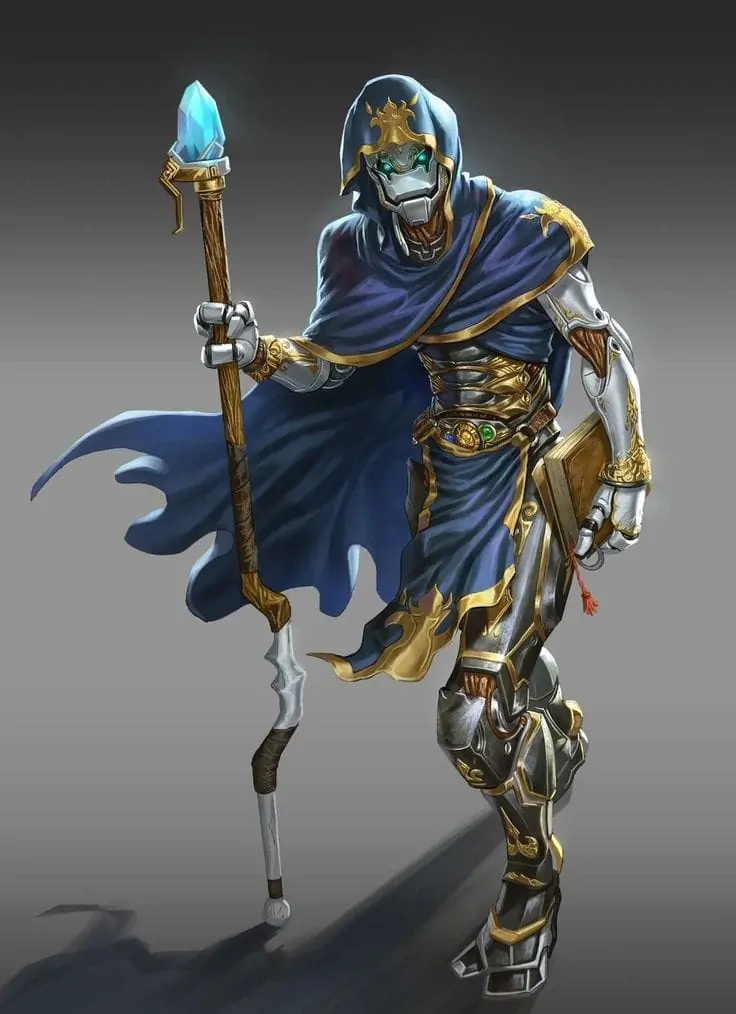Out of the varied cast of unique races in 5e, the Warforged are the only ones that are artificial constructs made of magic-infused metal. They were initially introduced in the game’s third edition as a part of the official Eberron setting.
They have appeared ever since DnD 3e, but since they are typically confined to the Eberron setting, I recommend talking to your Dungeon master about playing a Warforged in any other situation.
If they are okay with you playing a Warforged character, you’ll have access to an enjoyable and powerful race to build a character with. Welcome to a Warforged 5e Guide.
Key Info Up Front
- Book: Eberron: Rising From the Last War
- Editions: 3e, 4e, 5e
- Appearance: Large magical beings made from a variety of materials like stone, wood, or metal. They tend to be at least six feet tall with eyes of crystal and pieces of armor integrated into their body to augment their abilities.
- Example Warforged Names: Azm, Steeple, Falchion, Zealot, Pious, Morg
Warforged Lore
Creation of the Warforged
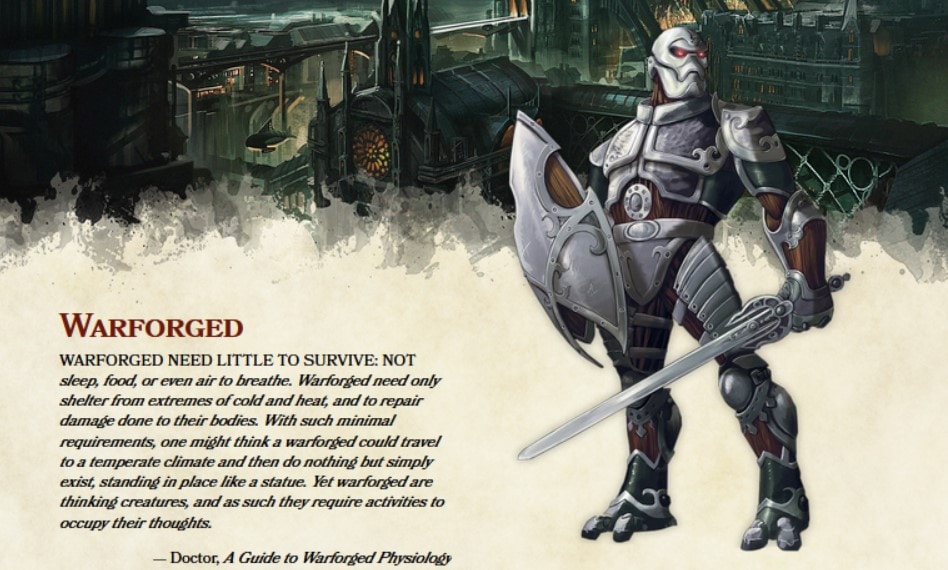
The Warforged were created by the mages of House Cannith in the plane Eberron. Eberron is a high fantasy setting that borders on steampunk. It has flying ships, magical electricity, and a towering city that is like New York City or Coruscant. The politics of Eberron is dominated by various houses that have an ancestral magical mark that its descendants can be born with to have unique abilities.
When the Warforged was created, there was a great war called the Last War being fought across the land of Eberron between all of the houses. The Last War dominated Eberron for years as countless lives were lost from being thrown into the war machine.
To try and stop the loss of life from the seemingly unending war, House Cannith dedicated time to developing the Warforged, an artificial race entirely dedicated to filling their ranks and bolstering their role in the Last War.
After their creation, the Warforged quickly spread throughout the armies of Eberron because they were considered second-rate citizens that did not have the same mental capacity or rights as the mortal races. However, the Last War came to an end when one of the great houses deployed a devastating weapon akin to a magical nuclear device.
While nobody knows exactly who used the gun, the war ended in a tenuous treaty to avoid future deployment of similar devices. This left Eberron in an uneasy peace that left the Warforged without a purpose and uncertain rights.
Prejudice After the War
In the peace talks that followed the conclusion of the Last War, the Warforged were granted full rights to be considered equal alongside the likes of humans and elves. However, this did not stop the Warforged from being the focus of intense racial prejudice and indictment by the many cultures of Eberron. These opinions stem from the Warforged’s complicated history and connection to a dark past that has left the people of Eberron deeply scarred.
Many still see the Warforged as agents only of destruction and death that have to be removed from society if they ever hope to achieve lasting peace. Still, others refuse to see them as equals or fully realized individuals with their thoughts, feelings, and rights.
These opinions run dangerously high in the governments of Eberron, with organizations and some government officials supporting either a race-wide ban of Warforged or even their deconstruction so that their materials can be used elsewhere.
Personalities and Culture
Warforged are created in a massive machine called a creation forge. When they are “born,” they come out fully formed with a clear mental slate that is absent of any knowledge of morality or the wider world. Their minds in this state are highly malleable, allowing their creators to indoctrinate them with desired beliefs and perspectives for their intended purposes.
For most of their early lives, they only believe what they are taught to think at their genesis until they eventually are confronted with contrarian evidence, opening up their minds to free thought and the ability to create their own opinions.
Since the end of the Last War, the Warforged have become defined by their search for a new purpose on an individual level. While many of them signed themselves over to serving new masters as indentured servants, others became dedicated laborers or guards and mercenaries. Warforged do not need to eat or sleep and are very driven to complete tasks set before them.
Because of this, they are highly desired workers, especially once others discover that they have no problem working 20-hour shifts daily. This has led to increased tension between the Warforged and general workers who feel that the new race is robbing them of work opportunities.
However, some Warforged have been known to accidentally fall upon artistic pursuits like becoming bards or painters. These cases have started to become more frequent throughout Eberron, but they are still thought to be unusual. Some Warforged are also known to try fitting in with their local people and cultures. Some try wearing clothes to fit in more, while others adopt the accents and speech patterns of the locals.
The Warforged also has an interesting perspective on religion. They were created without any religious disposition so that they could be sold to any buyer. Now that they have begun finding their way into the world, they’ve been exposed to religion and have had to grapple with the concept. Many Warforged has opted to forego religion entirely as they see it as similar to serving another master but a silent one.
Others have fallen into the religions of Eberron and are known to act as influential Clerics and Paladins. There are also stories of a tribe of Warforged that believe in a deity of their creation known as the Becoming God.
They work tirelessly toward building a powerful body to house their deity so that it can travel across Eberron, bring all of the Warforged together, and lead them to their homeland.
Warforged Traits
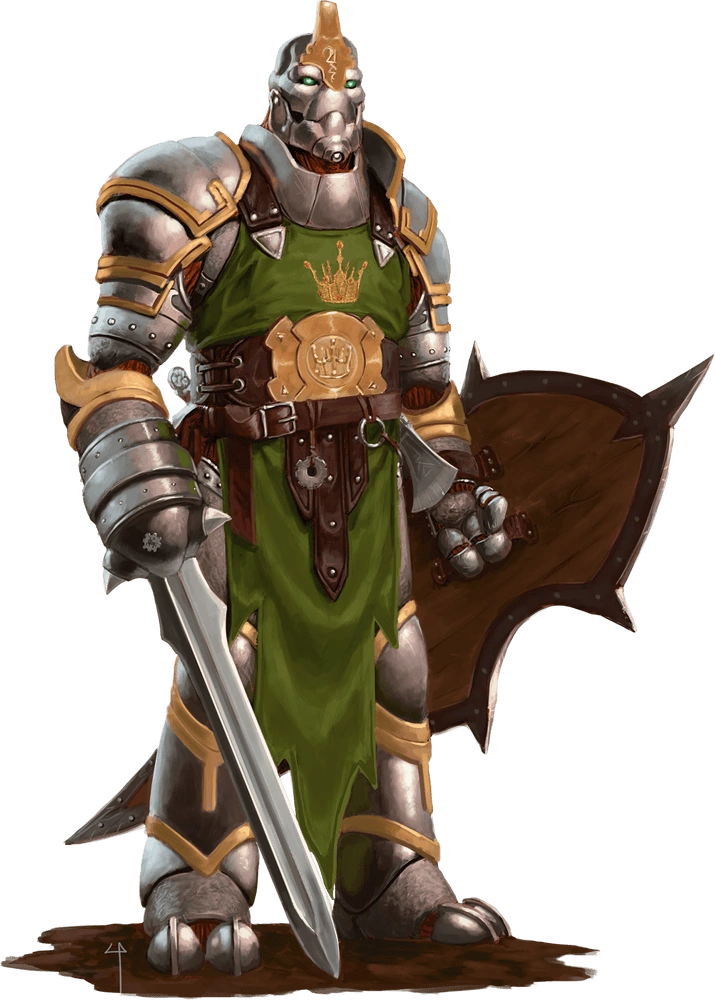
Since the supplement Eberron: Rising from the Last War was released before Mordenkainen Presents: Monsters of the Multiverse and the new custom traits rules found within it, Warforged comes with pre-determined Ability score increases. Of course, you can talk with your Dungeon Master about using the more customizable options that have been released to see if they are okay with it.
If you use the default rules for the Warforged, however, they come with +2 to your character’s Constitution and +1 in any other ability of your choice. This represents the Warforged being built for a particular purpose.
If your game takes place in Eberron, you should also note that all Warforged is between two and thirty years old because of their new existence in the world. The ultimate range of their lifespan is also still a mystery since they have not been shown to suffer any impacts from aging, and they are invulnerable to magical aging effects. Warforged also comes in a range of sizes, but their base walking speed is 30 feet.
The first Warforged racial trait is called Constructed Resilience. This feature is a solid defensive addition, granting you immunity to disease, removing your need to eat, drink, or breathe, preventing you from falling asleep, and giving you an advantage on saving throws against poison damage as well as resistance to all poison damage. Constructed Resilience is one of the most robust Warforged features and makes the race an excellent choice for covering the typical weaknesses of any class or party role.
The race’s second feature is Sentry’s Rest. This feature modifies your character’s long rest since they don’t have to sleep. Your Warforged has to stay motionless for six hours in a resting state, but during it, they are entirely conscious and aware of their surroundings. Their third feature is Specialized Design. This gives them two additional proficiencies, one in a skill and another with a type of tool.
Finally, the Warforged has a second defensive feature called Integrated Protection. This feature reflects the innate defensive capabilities of their metallic bodies. This gives them a permanent +1 to their Armor Class but does restrict them to wearing only armor that they are proficient with.
To wear armor, your character also has to connect it with their body for over an hour. Removing the armor from your body takes another hour, but these actions can be performed while resting. Another benefit is that as long as your character is alive, the armor cannot be removed against their will.
Roleplaying a Warforged
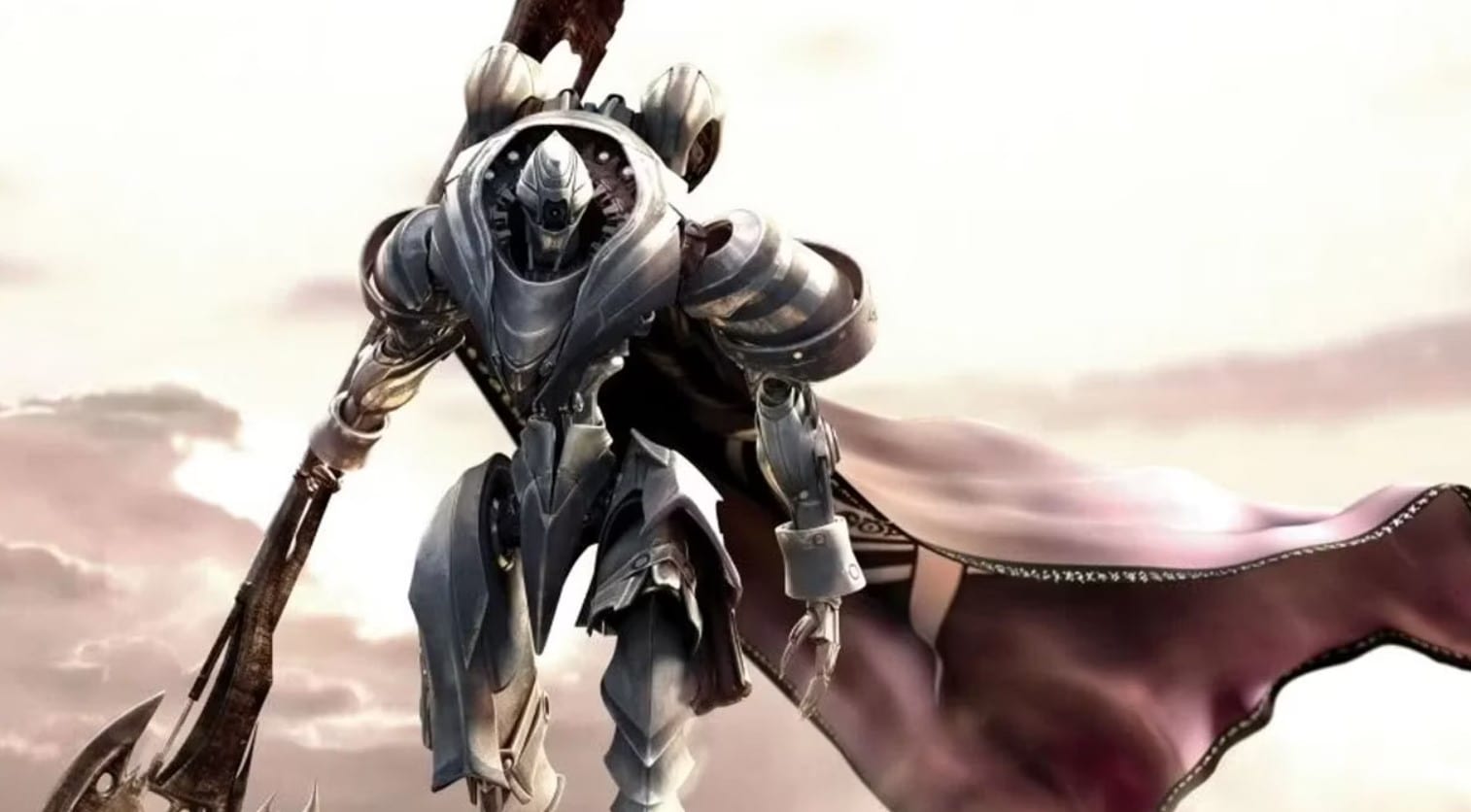
When it comes to roleplaying a Warforged character, it is imperative first to understand the race’s place in the campaign’s setting. If you are playing in Eberron, there is a ton of information for you to go from. Suppose your D&D campaign is using a different location or a homebrewed one. You’ll have to work with your Dungeon Master to determine precisely how the Warforged fits into it. Then, you’ll have to draw on that extensively when choosing both the backstory of your character as well as their personality.
I’ve found it also necessary to emphasize the almost infantile nature of Warforged. Since they are so new to the world, they are naturally interested in learning as much about it as they can. This can help make your character enjoyable to play as they are naturally drawn to the world around them. However, you should also make sure to note their sometimes stubborn attitude to information and opinions that contradict the lessons they learned when they were first created. They should also be suspicious of some parts of life in 5e, particularly ones that place people in the service of others with more power.
Another critical aspect of the Warforged is their prejudiced place in society. Roleplaying this part of the race can be difficult, so I recommend talking with your Dungeon Master and even your fellow players about it. Suppose you’re interested in roleplaying that situation. In that case, that is fine, but you need to make sure that the rest of the people you are playing with are comfortable with subjects like racism and prejudice being included in their game.
Those subjects can be complicated, so make sure to establish ground rules and limitations before trying to explore them with the entire party. If somebody in your group isn’t comfortable with those subjects being included in their game, ignore that part of the race or work with your Dungeon Master to remove it from the setting entirely.
The Best Warforged Classes
Warforged works well with literally any class in 5e, although they don’t excel exceptionally well at any particular ones. However, there are a few that they fit with particularly well. My favorite three classes for a Warforged character are below.
Barbarian
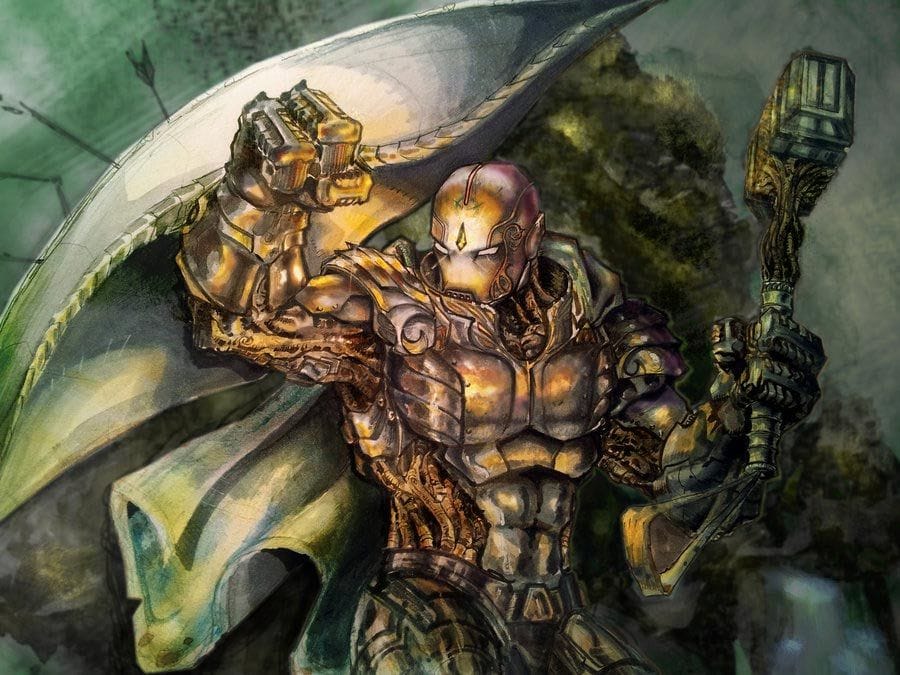
Barbarians combine excellent defensive and offensive abilities to be one of the most influential martial classes on the battlefield. Mechanically they work exceptionally well with the defensive options of the Warforged. Playing a Warforged Barbarian can be especially useful as Barbarians don’t tend to wear armor, so the race’s innate increase to their Armor Class comes in handy.
The Barbarian class also has some exciting flavor opportunities for a Warforged. Since Barbarians are driven by their rage on the battlefield, that gives you some exciting opportunities to explore what makes your Warforged so furious and how they learned to channel that rage into better combat abilities. Depending on your chosen subclass, you can also decide what to do when it comes to the form their popularity takes and where it potentially stems from.
Barbarian Subclasses
- Path of the Ancestral Guardian (Xanathar’s Guide to Everything): This subclass is focused on the Barbarian fulfilling a Defender role for the party. It can be a handy option for parties that have a lot of weak or vulnerable characters. However, the flavor of the subclass being fueled by the spirits of the character’s ancestors doesn’t fit very well with a Warforged, so you’ll have to figure out how that works for your character.
- Path of the Battlerager (Sword Coast Adventurer’s Guide): The Warforged solves most of the issues with this subclass because it relies entirely on wearing spiked armor. Since the Warforged can never have their armor removed, you don’t have to worry about the armor being taken from you and thus losing most of your subclass’ abilities, while the racial Armor Class increase helps cover the low strength of Spiked Armor. This class is a lot of fun, and it can be mighty if you have party members willing to dedicate resources to buffing and protecting you.
- Path of the Beast (Tasha’s Cauldron of Everything): This subclass comes with multiple opportunities to customize your take on the build, which is always great. It also is one of the most universally capable of the subclasses and is capable of fulfilling a Defender role while also shelling out decent damage. It also presents some fun roleplaying opportunities as you’ll have to explore your Warforged’s discovered connection with nature.
- Path of the Berserker (Player’s Handbook): The Berserker is the standard Barbarian subclass, but it comes with some painful interactions with Exhaustion. If your Dungeon Master intends to adhere to those rules, you’ll have a difficult time managing your class resources if you follow this route.
- Path of the Storm Herald (Xanathar’s Guide to Everything): The Storm Herald is an excellent subclass for newer players as it is relatively simple to get a lot out of while still being practical and having some options when it comes to encounters. It also has some fun implications for how your character came to control their environment in such a way while also being flashy.
- Path of the Totem Warrior (Player’s Handbook): The Totem Warrior is a highly customizable subclass, which carries a lot of complexity along with it. However, if you only have the Player’s Handbook at your disposal, this is likely your best option.
- Path of the Zealot (Xanathar’s Guide to Everything): The Zealot Barbarian is a good subclass choice for any players that aren’t the best at keeping characters alive. However, it does tend to feel restricted to acting as a Defender, while your Dungeon Master may not want to target your character much in combat because of how easily they can come back from death.
- Path of Wild Magic (Tasha’s Cauldron of Everything): The Wild Magic Barbarian takes some notes from the Wild Magic Sorcerer subclass and adds a healthy dose of randomness to your play. This can be a lot to react to, but most of the benefits that you can get from its specific table are positive. I also love this subclass’ flavor for a Warforged because it works so well with the explanation that it stems from a malfunction in your character’s programming or creation.
Paladin

As you likely know, Paladins get their strength from their belief and dedication to a particular deity. Since Warforged have been known to subscribe to the religions of the other mortal races, this class is still an excellent option for your character, and the defensive benefits of playing a Warforged work exceptionally well with this class. Determining why your character dedicated their life to their religion will be very important but is an exciting role-playing opportunity.
Since a Paladin’s subclass is determined by the deity that they follow, picking a subclass and accompanying god is very important for your character. Your Warforged will have to roleplay accordingly to the beliefs of your deity, so you’ll want to make sure to pick one that aligns well with what you have in mind for your character. The options that you have to choose from are below.
Paladin Subclasses
- Oath of Conquest (Xanathar’s Guide to Everything): This domain is all about controlling crowds and playing offensively. Their bonus spell list is a tad disappointing, but they are still competent. However, this subclass relies almost entirely on Charisma, so make sure to increase it while making your character.
- Oath of Devotion (Player’s Handbook): Devotion Paladins are the most basic and generic option for the class. It doesn’t focus on any particular aspect of the course, but it is both simple to run as well as makes a lot of sense with a Warforged that just started dedicating themselves to religion.
- Oath of Glory (Mythic Odysseys of Theros or Tasha’s Cauldron of Everything): This subclass comes with some healthy options, but they tend to be very situational. This can make it challenging to feel like you are getting as much out of your subclass as possible, but I love the idea of a Warforged that wants to become a storied hero to inspire all other Warforged everywhere.
- Oath of Redemption (Xanathar’s Guide to Everything): The Oath of Redemption is focused on Paladins that try to solve issues without the use of violence. This subclass’ flavor also is excellent for Warforged as the idea of a robot built for war not wanting to commit violence is a perfect setup for a character. The subclass mechanics are also solid in their own right, but you’ll need high Charisma to back them up.
- Oath of the Ancients (Player’s Handbook): The nature-loving Paladin subclass, the Oath of the Ancients, is a decent option that shares a lot with Rangers and Druids. You’ll have to figure out what motivated your Warforged’s relationship with nature, but it does come with fun options if you manage to.
- Oath of the Crown (Sword Coast Adventurer’s Guide): A Crown Paladin has some incredible potential as a Defender with enjoyable and unique mechanics. However, I have issues with this subclass’ flavor because it sees them swearing an oath to a ruling person, which contradicts the race’s dislike of working for a master.
- Oath of the Watchers (Tasha’s Cauldron of Everything): You should only take this subclass if you know that your campaign will feature extraplanar enemies frequently. Otherwise, you won’t be able to get much out of this subclass. If you pick it in the proper movement, however, you’ll get a lot out of it because it fulfills its limited purpose exceptionally well.
- Oath of Vengeance (Player’s Handbook): If you want your Warforged to focus on being a Striker and dealing a ton of damage, this is the subclass for you. It is an excellent damage-dealing option and makes a lot of sense for a Warforged because of their intended purpose as soldiers.
- Oathbreaker (Dungeon Master’s Guide): Your Dungeon Master may not want you to take this subclass because it is intended for NPCs that are evil clerics. However, you can use this subclass if you wish your Warforged to be a bad character. If you do play an Oathbreaker, you’ll find it has some vital area of effect options, especially ones that play around with the powerful fear status effect.
Warlock
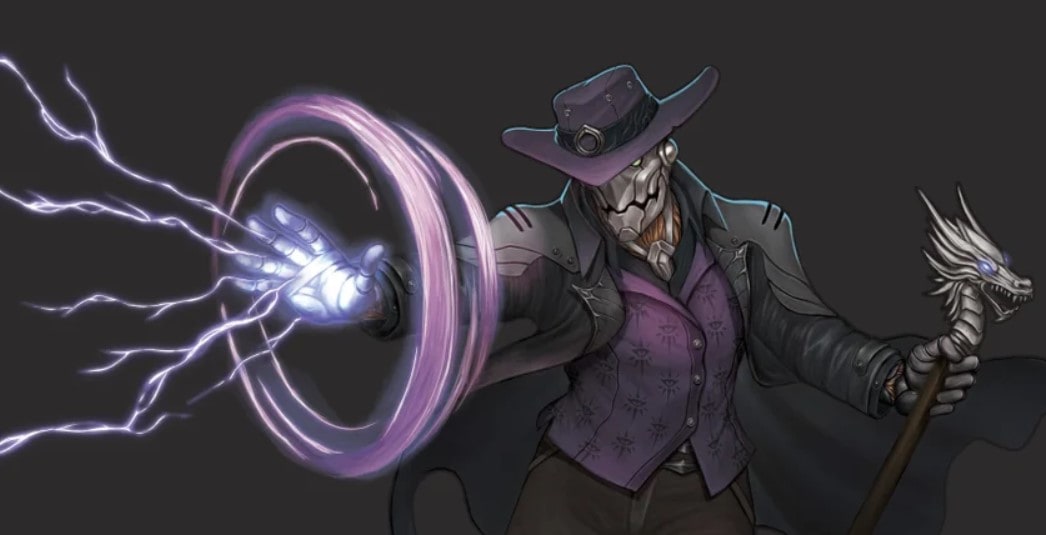
Playing a Warforged Warlock can help make a very durable caster, especially if you choose the Hexblade subclass. I also really like this class for a Warforged flavor-wise. The lack of purpose for most Warforged leaves them especially vulnerable to being seduced by the promised power and direction that a Warlock’s patron can provide.
Their desire for new knowledge and how much they believe what they are told by others that influence them can lead to some amazing playing moments as your character battles the influence of their patron. I think it also works well with a Warforged, possibly thinking their patron could be the Becoming God.
Warlock Subclasses
- The Archfey (Player’s Handbook): Archfey Warlocks are focused on deceiving others with the use of magical illusions and enchantments. These can provide a lot of utility in most situations, but you’ll likely come across at least a few enemies that are resistant or immune to those effects. So, you’ll need to diversify your abilities a bit to counteract this.
- The Celestial (Xanathar’s Guide to Everything): This subclass tries to turn the Warlock into a healing class. However, it doesn’t fulfill the role incredibly well, and the Cleric spells that it gives you access to aren’t quite enough to be worthwhile. This subclass is fine, but you’re better off leaving the healer to other party members.
- The Fathomless (Tasha’s Cauldron of Everything): You should avoid this subclass unless you know that you’ll be playing a nautical campaign. Nearly all of its features require you to be around water, so if you aren’t constantly around water in the campaign, this subclass will feel underpowered.
- The Fiend (Player’s Handbook): The Fiend is a very specific subclass, but that doesn’t prevent it from being effective on the battlefield. It fits naturally into a Blaster role in the party while relying almost exclusively on fire damage.
- The Genie (Tasha’s Cauldron of Everything): If you want your Warforged to be a spell-blasting force to reckon with, the Genie patron is for you. Many of its options require you to think on your feet and be creative, but they can be mighty if used properly. However, only use this subclass if you’re an experienced player that is comfortable with 5e’s systems so that you can take full advantage of the subclass.
- The Great Old One (Player’s Handbook): The Great Old One patron comes with a ton of options that make it very adaptable, but it comes with the unfortunate side effect of driving your character insane. You might have to put in some work to make this subclass work well as a Warforged to decide how a Warforged is losing their grips on their sanity works.
- The Hexblade (Xanathar’s Guide to Everything): The Hexblade is one of the best Warlock options generally and is the best for the Warforged. It takes full advantage of the Warforged’s defensive capabilities to make the Warlock a melee-focused solid class.
- The Undead (Van Richten’s Guide to Ravenloft): This subclass doesn’t work very well flavor-wise with a Warforged because it is focused almost entirely on influencing the undead. However, it does come with some fun options if you can justify your Warforged’s decision to follow this patron.
- The Undying (Sword Coast Adventurer’s Guide): This patron tries to increase the survivability of the Warlock. While the Warforged helps in this regard slightly, its features are highly situational, making this subclass often feel extremely limited and underbaked.
FAQs
Question: What classes are best for Warforged?
Answer: Warforged can work well in any 5e class, although the Wizard likely gets the least out of its racial features.
Question: What book is the Warforged found in for 5e?
Answer: The Warforged race is part of the setting book Eberron: Rising from the Last War.
Question: Can Warforged become werewolves in 5e?
Answer: Yes, while Warforged could not become werewolves in previous editions, they can in 5e because they are listed as humanoids.
Conclusion
The Warforged are one of my favorite races because of their complicated and deep history. Their defensive racial features also make them one of the most universally useful races. This is especially true for newer players that can get a lot of use out of the defensive options helping them keep their first characters alive.
So, as long as you can work the Warforged into your campaign’s setting, you’ll have a great time rolling a Warforged character.
- Steel Defender 5e Guide - September 5, 2022
- Harengon 5e Guide - August 24, 2022
- Shambling Mound 5e Guide: The Most Terrifying Plant - August 21, 2022


